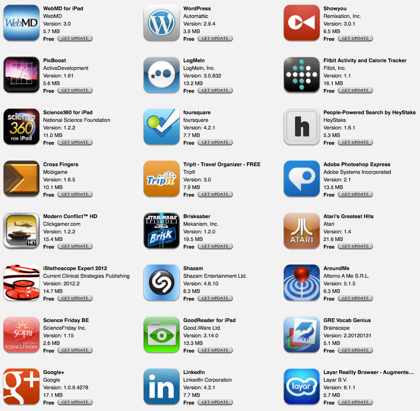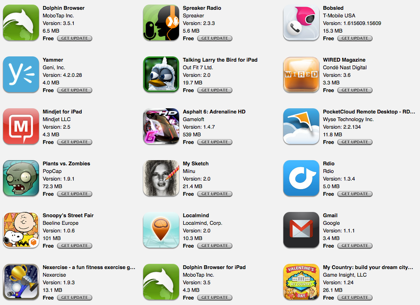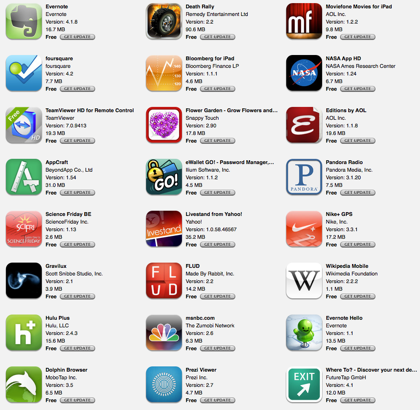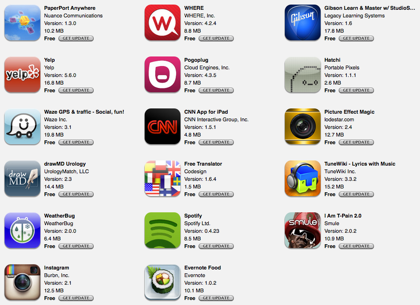Forty-two (42) of the apps for my iPad &/or iPhone were updated in the past week. Apps that do not have comments in the list below indicates that the update is simply a bug fix release.
(more…)
Blog
-
Apps updated for my iPhone & iPad in the past week: 42
-
ProClip car dashboard mounting hardware for iPhone 4 & HTC HD7 – Is it as easy to install as they claim?
 My Griffin iTrip Auto for the iPhone, which had been flaky for about a year, became even flakier and lost its inline remote control function a few weeks ago. So, I replaced it with the Griffin iTrip Auto Universal Plus which does not have an inline remote control but has the advantage of working with other phones like my HTC HD7. The new problem was that I now needed some kind of car mount so I could touch the screen without holding the device (against the law where I live). So, I sent email to a bunch of friends asking for advice. It turns out that one of those friends works for ProClip which sells mounts for all kinds of gadgets. So, (Full Disclosure), my friend offered to send me the mount compotents to deal with my problem. ProClip claims that their dashboard mounts can be assembled and attached in minutes. Here’s what I found…
My Griffin iTrip Auto for the iPhone, which had been flaky for about a year, became even flakier and lost its inline remote control function a few weeks ago. So, I replaced it with the Griffin iTrip Auto Universal Plus which does not have an inline remote control but has the advantage of working with other phones like my HTC HD7. The new problem was that I now needed some kind of car mount so I could touch the screen without holding the device (against the law where I live). So, I sent email to a bunch of friends asking for advice. It turns out that one of those friends works for ProClip which sells mounts for all kinds of gadgets. So, (Full Disclosure), my friend offered to send me the mount compotents to deal with my problem. ProClip claims that their dashboard mounts can be assembled and attached in minutes. Here’s what I found…
(more…) -
Facebook 2.3 for Windows Phone: Nice update. But, only necessary for 10% of activities
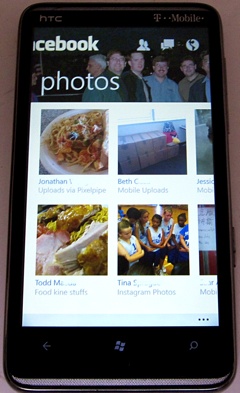 Facebook 2.3 for Windows Phone appeared earlier today and looks great. It seems to run faster, has a cleaner look and feel, and a very nice Metro UI design that moves the user from an overview page to news feed to notifications to photos use the familar (to Windows Phone users) sidewards sliding gestures. The optional background images look good too. I initially considered not turning it on. However, I found it really adds a personal touch and will leave it on now that I’ve seen it. I wonder, though, if there is away to choose which images appear in the top banner.
Facebook 2.3 for Windows Phone appeared earlier today and looks great. It seems to run faster, has a cleaner look and feel, and a very nice Metro UI design that moves the user from an overview page to news feed to notifications to photos use the familar (to Windows Phone users) sidewards sliding gestures. The optional background images look good too. I initially considered not turning it on. However, I found it really adds a personal touch and will leave it on now that I’ve seen it. I wonder, though, if there is away to choose which images appear in the top banner.The irony is that while it is nice to see a big update for the Facebook app, it is almost unnecessary on Windows Phone since 90% (or in my case nearly 99%) of Facebook activity can be handled from the Me hub (posts and notifications) and People hub (status updates).
(more…) -
Apps updated for my iPhone & iPad in the past week: 41
Forty-one (41) of the apps for my iPad &/or iPhone were updated in the past week. Apps that do not have comments in the list below indicates that the update is simply a bug fix release. The vast majority of updates are solely bug fixes.
(more…) -
Ugh! Replacement iPhone 4 has yellow display problem
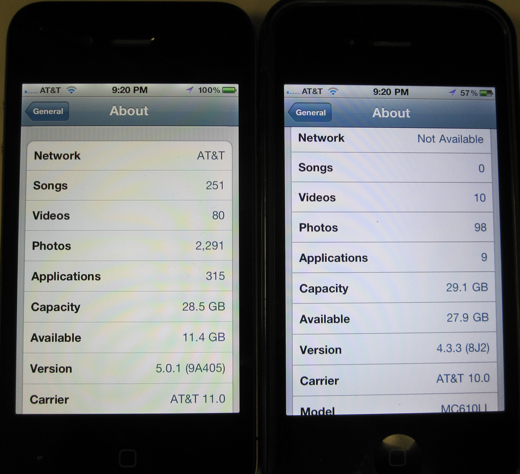
Refurbished iPhone 4 (left) with yellow displayApple replaced my iPhone 4 yesterday because of a malfunctioning select button. The replacement device is a refurbished iPhone 4. Unfortunately, it has the yellow display problem that many people complained about when the iPhone 4 was first released. I apparently have one of those that was returned. You can see the yellow display problem in the photo above.
The refurbished iPhone 4 I was given also has what appears to be an older model number, MC319LL, compared to the phone on the left (still running iOS 4.x) which is a model MC610LL.
I’m going to make another appointment at the Genius Bar to have this phone replaced.
-
Apple Genius Bar appointments not conducted at the “bar” anymore
I learned something today when I took my iPhone 4 (flaky home button) to the Apple Genius Bar today. Meeting for appointments no longer take place at the “bar” itself. This was, at least, the case for my iPhone. We just stood in on the store floor while the Genius (Sean) diagnosed my problem, determined that the device was still covered by an extended Apple Care warranty, and went to get a replacement device (refurbished iPhone 4).
